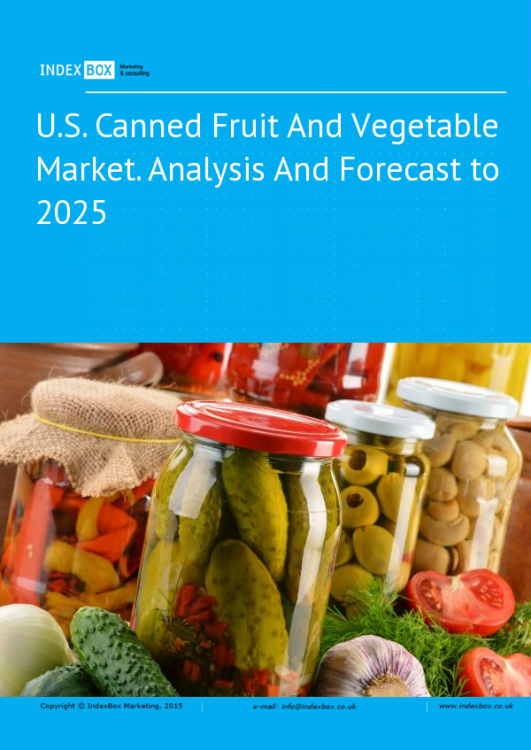You are here
Back to topCanned Fruit And Vegetable Market Overview in the USA - Key Insights

The revenue of the canned fruit and vegetable market in the U.S. amounted to $27B in 2018, increasing by 1.6% against the previous year. This figure reflects the total revenues of producers and importers (excluding logistics costs, retail marketing costs, and retailers’ margins, which will be included in the final consumer price). The market value increased an average annual rate of +1.5% from 2013 to 2018; the trend pattern remained relatively stable, with somewhat noticeable fluctuations in certain years. The most prominent rate of growth was recorded in 2015, with an increase of 5.3% against the previous year.
Production of Canned Fruit And Vegetable in the USA
In value terms, canned fruit and vegetable production stood at $26B in 2018. The total output value increased an average annual rate of +1.5% over the period from 2013 to 2018; the trend pattern remained relatively stable, with only minor fluctuations being recorded throughout the analyzed period.
Imports of Canned Fruit And Vegetable
Imports into the USA
In 2018, approx. 779K tonnes of canned fruit and vegetable were imported into the U.S.; growing by 3% against the previous year. The total import volume increased an average annual rate of +3.6% over the period from 2013 to 2018. The growth pace was the most rapid in 2015 when imports increased by 13% y-o-y. Over the period under review, the canned fruit and vegetable imports attained its maximum volume in 2018, and are likely to continue its growth in the immediate term.
In value terms, canned fruit and vegetable imports amounted to $1B (IndexBox estimates) in 2018. The total import value increased an average annual rate of +3.4% from 2013 to 2018; the trend pattern remained relatively stable, with only minor fluctuations being recorded in certain years.
Imports by Country
Spain (162K tonnes), Greece (86K tonnes) and India (70K tonnes) were the main suppliers of canned fruit and vegetable imports to the U.S., together accounting for 41% of total imports. These countries were followed by China, Peru, the Netherlands, Italy, Turkey, Morocco, Egypt, Thailand, and France, which together accounted for a further 44%.
From 2013 to 2018, the most notable rate of growth in terms of imports, amongst the main suppliers, was attained by Egypt (+17.7% per year), while the other leaders experienced more modest paces of growth.
In value terms, largest canned fruit and vegetable suppliers to the U.S. were Spain ($221M), Greece ($171M) and Peru ($84M), with a combined 47% share of total imports. Italy, the Netherlands, China, India, Turkey, Morocco, France, Thailand, and Egypt lagged somewhat behind, together comprising a further 39%.
Egypt (+17.4% per year) experienced the highest growth rate of imports, in terms of the main suppliers over the last five years, while the other leaders experienced more modest paces of growth.
Import Prices by Country
The average canned fruit and vegetable import price stood at $1.3 per kg in 2018, therefore, remained relatively stable against the previous year. Overall, canned fruit and vegetable import price continues to indicate a relatively flat trend pattern. The pace of growth appeared the most rapid in 2014 when the average import price increased by 3.8% year-to-year. In that year, the average import prices for canned fruit and vegetable reached their peak level of $1.4 per kg. From 2015 to 2018, growth of the average import prices for canned fruit and vegetable failed to regain its momentum.
Import prices varied noticeably by the country of origin; the country with the highest import price was Greece ($2 per kg), while the price for India ($728 per tonne) was amongst the lowest.
From 2013 to 2018, the most notable rate of growth in terms of import prices was attained by Greece (+1.3% per year), the import prices for the other major suppliers experienced mixed trend patterns.
If you want to access the report, please click: https://www.indexbox.io/store/us-canned-fruit-and-vegetable-market-analysis-and-forecast-to-2020/













